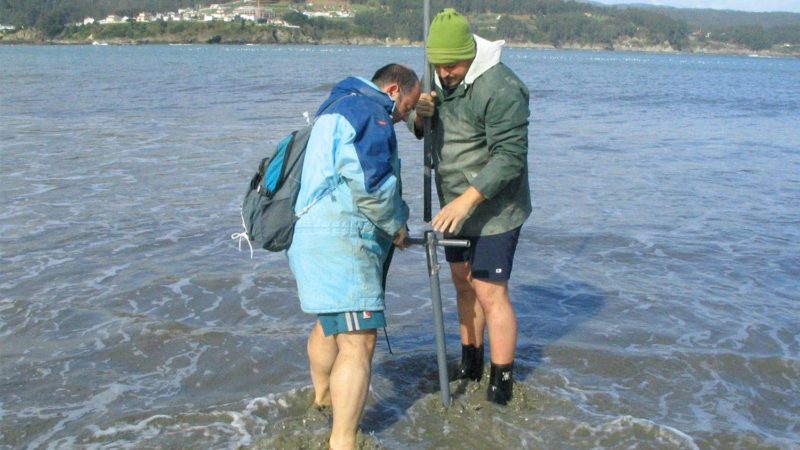Miguel Ángel Nombela, coordinator of the Geological Oceanography and Biogeochemistry group of the Marine Research Centre of the University of Vigo, CIM, and Ángel Mena, researcher from the same group, publish in the international journal Sedimentology, leader in the field, a study that groups the shellfish banks into clusters following the composition and texture of the sediment. The study represents a step forward in controlling all the factors that influence the productivity of each bank, and in this way managing each of them according to their own needs.
The work is the result of collaboration with the Territorial Headquarters of the “Consellería do Mar de Celeiro” and the CSIC Marine Research Institute, being a “clear example of scientific collaboration between different organizations with the common objective of trying to provide answers and help to solve problems on the management and exploitation of resources in the marine environment”, Miguel Ángel Nombela explains, researcher at the CIM and dean of the Faculty of Marine Sciences. The research was carried out in the shellfish banks of the “Rías Altas”. He used a new methodology of statistical analysis for sedimentary records. The result shows that the productivity of inter-tidal shellfish banks is affected by a wide variety of environmental parameters.
Half a thousand samples from 57 shellfish banks were analyzed
The new method grouped shellfish beds by combining parametric models and multivariate analyzes together with sedimentary data, such as composition and grain size. “The initial idea consisted of analyzing the evolution over time of the sediments that constitute the substrate on which these banks settle,” Nombela explains. He adds the samples from each bank were collected every five centimeters for each sedimentary record, with a length of 50 cm. “In this way, each bank analyzed had a total of ten sediment samples,” Mena says. He adds that, in total, 570 samples were analized. They belong to 57 shellfish banks of the “Rías Altas”: 19 from the “Rías de Ortigueira”, including those of “Ladrido”; 12 from “Barqueiro”; 10 from “Ribadeo”; 9 in “Foz” and 7 in “Viveiro”.
These shellfish spaces were classified through both the geological footprint of their environment and the terrestrial or marine influence on them and, finally, the deep dependency relationship between the characteristics of the water that covers these banks and the composition of the sediment could be demonstrated. “In addition to the importance to relate the characteristics of each cluster with the characteristics of the water on that shellfish bank, we can also relate the composition and characteristics with the productivity of each one of them”, the researchers explain.
Source: DUVI

